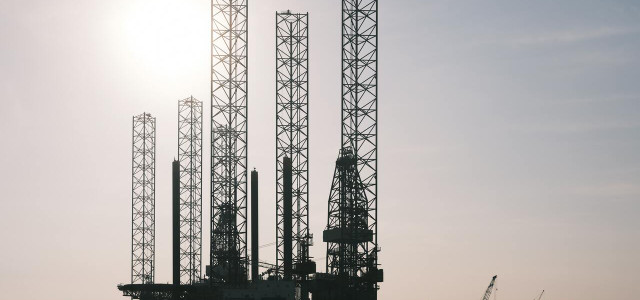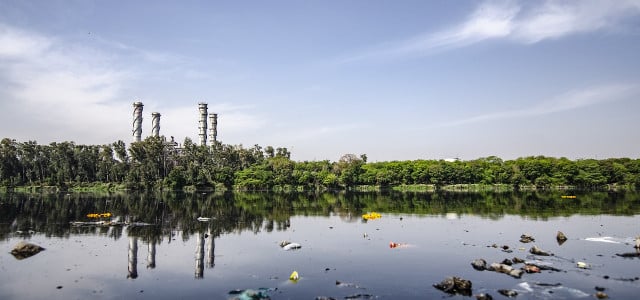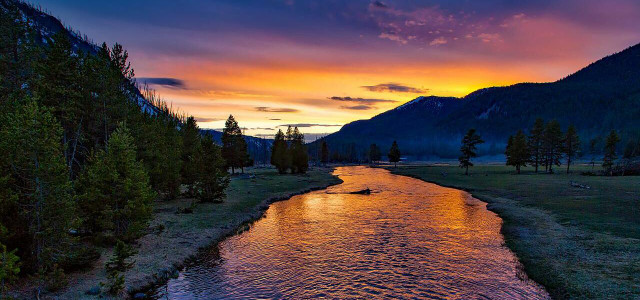Learn the truth behind one of the most controversial infrastructure projects in recent history: the Keystone Pipeline. Here are the Keystone Pipeline myths and facts to know.
The Keystone XL Pipeline has been a controversial topic for over a decade and a project which has been pulled in various directions along the way. This article will help you better grasp exactly what happened and set straight the most important Keystone Pipeline myths and facts.
Keystone XL Pipeline History

The Keystone Pipeline, planned and owned by TransCanada Energy and, since March 2020, owned by the Government of Alberta, is an oil pipeline network that spans Canada and the United States. The system was established in 2010 and transports oil from the Western Canadian Sedimentary Basin in Alberta to oil refineries in Texas and Illinois.
The Keystone XL Pipeline was a proposed 1,179-mile pipeline spanning from Alberta to Nebraska. It held an estimated cost of $8 billion and would potentially transport up to 830,000 barrels of oil daily. The project was primarily intended to source crude oil from Alberta’s oil sands, with a smaller quantity from North Dakota.
By connecting to the existing Keystone Pipeline in Kansas, the project sought to establish a shortcut and enable greater amounts of oil to be transported to the Gulf Coast, where many of the US’s oil refineries are located.
The pipeline’s intended trajectory was across the US-Canada border in Montana, through South Dakota and Nebraska, and to connect with channels in Oklahoma and Texas. The Keystone XL would have served as an extension of the Keystone Pipeline, expediting the path between Alberta and Kansas while simultaneously increasing the transportation of crude oil to the Gulf Coast.
The project faced multiple setbacks, including protests and legal challenges. In 2015, former President Barack Obama rejected the permit for the pipeline, citing concerns about its impact on climate change. However, in 2017, former President Donald Trump reversed that decision with an executive order and issued a permit for the pipeline to proceed.
Upon President Joe Biden’s first day in office, the Keystone XL Pipeline would see another executive order, this time halting its progress.
Keystone Pipeline Myths and Facts: What’s the Controversy?



Why has the past decade seen so much back-and-forth about this project? The Keystone Pipeline was controversial for several reasons, including:
- Environmental concerns: The pipeline was designed to transport crude oil from the Alberta tar sands to refineries on US Gulf Coast. Critics argued that extracting and transporting the heavy crude oil from the tar sands would result in significant greenhouse gas emissions and environmental damage, including water and air pollution and harm to wildlife. Moreover, tar sand oil is a high-carbon emitter and dangerous to the environment when spills happen, as it’s more difficult to clean up.
- Indigenous rights: Opposition to the Keystone XL project was voiced by several Indigenous and First Nations peoples in the US and Canada. These groups cited several reasons for their objections, such as potential harm to sacred locations, pollution and the risk of water contamination, which could adversely affect the health of their communities.
- Economic impacts: Proponents argued that the pipeline would create jobs and boost economic growth, while opponents argued that the economic benefits were overstated and that the risks and costs outweighed any potential benefits.
- Political polarization: The pipeline became a symbol of the divide between Democrats and Republicans on issues related to energy policy, the environment and climate change.
Myth #1: The Keystone Pipeline Would Boost the Economy



Of all the Keystone Pipeline myths and facts, one of the most pervasive is that it would create jobs and promote economic growth. However, many of these jobs would have been temporary, with minimal long-term employment impact.
The American Petroleum Institute alleged the Keystone project would offer approximately 343,000 employment opportunities for Americans over four years, resulting in an increase of up to $34 billion in the US economy by 2015. Contrastingly, the non-partisan Congressional Research Service found that these figures were derived from an internal study that had not undergone evaluation.
As per the State Department’s analysis, the Keystone XL Pipeline would generate roughly 42,000 temporary and 50 permanent jobs once the construction was complete.
Keystone Pipeline Myth #2: It Would Improve Energy Security



Another common myth about the Keystone XL Pipeline is that it would have improved energy security in the US. However, this claim is not altogether accurate.
Energy security refers to a country’s ability to reliably and affordably access energy resources to meet its needs. While the Keystone XL Pipeline would have provided another source of crude oil, primarily from Canada, it would not have significantly improved the energy security of either country for several reasons.
First of all, the US already has a diverse range of domestic and imported sources of crude oil, making it less reliant on any one source. Additionally, the US has been increasing domestic crude oil production in recent years, reducing its dependence on imported oil.
Another counter to this myth is that the Keystone XL Pipeline would have primarily transported crude oil to be exported to other countries rather than for domestic consumption. This means that the pipeline would not have directly contributed to US energy security but instead would have supported the energy security of other countries.
Lastly, improving energy security requires more than just increasing the availability of energy resources. It also involves promoting energy efficiency, diversifying energy sources, investing in renewable energy and reducing greenhouse gas emissions to mitigate the impact of climate change.
Myth #3: The Keystone Pipeline Rarely Spills Oil



The claim that the Keystone XL Pipeline rarely spills oil is another falsehood. In fact, the existing Keystone Pipeline, which the Keystone XL Pipeline would have connected to, has seen more than 20 oil spills since it was constructed in 2010. These spills have caused significant environmental damage, including contamination of waterways and harm to wildlife.
For example, in 2017, the Keystone Pipeline spilled over 200,000 gallons of oil in South Dakota, leading to a pipeline shutdown for several weeks. In 2022, the pipeline had the largest spill in its history in Kansas, where an estimated 588,000 gallons of crude oil was spilled. These spills and many others have led to concerns among environmental groups and local communities about the potential risks of expanding the pipeline network.
The Keystone XL Pipeline was also designed to transport heavy crude oil, which is more difficult to clean up than conventional oil in the event of a spill.
While pipeline spills are relatively rare compared to other forms of oil transportation, they still pose a risk to the environment and communities along the pipeline’s route.
Keystone Pipeline Myth #4: Keystone XL Would Decrease Gas Prices



As noted earlier, oil transported through the Keystone XL Pipeline would have been primarily destined for export rather than for domestic consumption. Therefore, it is unlikely that the pipeline would have had a significant impact on the price of gasoline at the pump.
Furthermore, the price of crude oil is determined by global markets, which are influenced by a range of factors such as supply and demand, geopolitical tensions, and global economic conditions. The impact of a single pipeline on the global oil market is likely to be minimal and temporary, particularly given the current global oversupply of oil.
Myth #5: The Pipeline Is Safe



Another myth about the Keystone XL Pipeline is that it is not dangerous to the environment or nearby communities. However, the proposed pipeline has faced criticism for its potential impact on water safety and pollution.
The pipeline would cross over 1,000 waterways, including the Ogallala Aquifer, a major source of drinking water for millions of people in the Great Plains region. Environmentalists and some scientists have raised concerns that a pipeline spill could contaminate the aquifer and nearby water sources, potentially causing severe health and environmental problems.
In addition to the threat of spills, the pipeline could also contribute to water pollution by impacting surrounding ecosystems. The channel would require clearing large areas of land, which could disrupt natural habitats and increase the runoff of pollutants into nearby waterways. Additionally, the construction and operation of the pipeline could release contaminants into the air and water, potentially harming nearby communities and wildlife.
The transportation of tar sands oil, which the Keystone XL Pipeline would carry, also poses unique risks in the event of a spill. Tar sands heavy crude oil is thicker and more challenging to clean up than conventional crude oil. It can sink into and become embedded in riverbeds and sediment, making it difficult to remove and posing more significant environmental risks.
The existing Keystone Pipeline has experienced multiple spills and leaks that have caused environmental damage and pollution. These spills have contaminated nearby water sources and land, negatively impacting wildlife populations in the surrounding areas. The pipeline also cuts through several vital habitats and ecosystems, posing severe risks to wildlife.
Keystone Pipeline Fact #1: The Keystone XL Pipeline Project Is Cancelled



Amidst the chaos of the decade-long struggle by Indigenous groups and environmental activists and the confusion caused by Keystone Pipeline myths and facts — and misinformation — one thing is certain: the project has finally been abandoned.
Its collapse began when President Biden entered office and denied the project an essential permit, fulfilling one of his campaign promises. In June 2021, the Canadian energy infrastructure company TC Energy (formerly TransCanada Corporation) formally abandoned the project as its corporate backer.
Fact #2: The Keystone Pipeline Has Impacted Communities



The Keystone Pipeline and Keystone XL Pipeline have had notable sociopolitical effects on Indigenous communities, such as the Rosebud Sioux Tribe and the Fort Belknap Indian Community in North America. It has also led to numerous environmental injustices and harm to low-income and minority communities.
Communities raised concerns about both pipelines since their proposal, citing the projects’ infringement on their treaty rights and sacred lands. The pipelines’ construction and operation would cut through lands that hold significant cultural, spiritual and environmental value to these communities, causing damage to ancestral burial grounds. Furthermore, the construction of the Keystone XL would have likely impacted hunting and fishing grounds and water sources for the Fort Belknap Indian Community.
Concerns have also been raised about environmental justice and the disproportionate impact of oil spills and other ecological damage on low-income and minority communities. These communities often live closer to the pipeline’s route and may lack the resources to protect themselves from environmental risks. Environmental racism is a significant concern in this context, as Indigenous communities and other marginalized groups have historically been disproportionately impacted by industrial projects and ecological damage.
Other oil pipelines for years have threatened Indigenous communities and persist as a problem. The Dakota Access Pipeline is a blatant example of a similarly contemptuous project that endangered Native American communities. The project destroyed artifacts and sacred burial sites.
Overall, the Keystone Pipeline and Keystone XL Pipeline have been controversial due to their probable effects on Indigenous communities’ rights, treaty violations and environmental justice. This is in addition to the disproportionate impact of environmental damage on low-income and minority communities. Such issues have been a major focus of opposition to the pipelines, with many environmental and Indigenous groups calling for a halt to their construction and operation.
In the case of the Keystone XL Pipeline, at least, they were successful.
Keystone Pipeline Fact #3: It Has Already Affected the Environment



No discussion about Keystone Pipeline myths and facts would be complete without covering the potential environmental impacts of the project. The implications of the pipeline range from higher greenhouse gas emissions and poorer water quality to destroyed wildlife habitat.
- Greenhouse Gas Emissions: The production and consumption of oil from the oil sands in Alberta, where the pipeline would have originated, generates significantly more greenhouse gas emissions than conventional oil production. According to a 2015 Environmental Protection Agency (EPA) report, oil production from the tar sands generates 14% more greenhouse gas emissions on a well-to-wheels basis than the average crude oil consumed in the US. Building the pipeline would have facilitated the transportation of this oil to the US and increased its consumption, resulting in significant greenhouse gas emissions.
- Water Quality: The pipeline would have crossed more than 1,000 bodies of water, including the Missouri River, which provides drinking water to millions. The pipeline posed a risk of oil spills, which could contaminate these water sources and harm aquatic life with more corrosive, acidic, thicker tar sand oil. In addition, the pipeline’s construction would have required the excavation of trenches and the disposal of waste materials, which could also have contaminated water sources.
- Wildlife Habitat: The pipeline would have crossed important wildlife habitats, including those of threatened and endangered species, such as the whooping crane and the pallid sturgeon. The channel could have disrupted the natural behaviors of these species, including migration, nesting and foraging, and caused long-term harm to their populations.
Tar Sands Oil Explained



The tar sands industry endangers the environment in many ways. The mining operations excavate and raze the boreal forests of Canada to access oil beneath, destroying a vast carbon sink and innumerable animal habitats. Furthermore, the mines contaminate and exhaust freshwater resources, generate enormous ponds of poisonous waste, and jeopardize the health and livelihoods of the First Nations people residing nearby.
The refining process of the viscous, dark substance produces piles of petroleum coke, a hazardous byproduct similar to coal. Furthermore, the entire process of extracting and refining the oil causes three to four times more carbon emissions than traditional crude oil extraction and processing.
A Symbol for the Fight Against Climate Change



The potential for severe environmental damage from the Keystone XL pipeline cannot be overstated. For over a decade, this project loomed as a significant threat to local communities in Canada and parts of the US.
The eventual environmental triumph can be largely credited to the persistent efforts of Indigenous peoples, farmers, residents, and environmental activists who stood up against a formidable opponent: the fossil fuel industry. This industry, known for its victories and substantial financial resources, spent vast sums on lobbying for the pipeline.
In the lead-up to the 2014 midterm elections, the fossil fuel industry poured over $721 million into congressional support. When industry-friendly politicians seized control of both congressional houses in January 2015, their initial priority was to pass a bill fast-tracking the Keystone XL approval, although this attempt failed.
Following this, the fossil fuel industry contributed millions to Trump’s 2017 inauguration. Soon after, he revived the Keystone XL project, prompting the industry to ramp up its lobbying activities.
Despite the substantial financial support from the fossil fuel industry, the Keystone XL pipeline project has ultimately been stopped. This achievement is due to the combined efforts of environmental activists, Indigenous groups, and concerned citizens who engaged in protests, large-scale demonstrations and acts of civil disobedience.
Their actions prove that individuals can make a tangible impact in the fight against climate change and the dominance of big oil companies.
Read more:
- Carbon Neutral vs. Net Zero: What’s the Difference?
- Plastitar: A New Type of Pollution, Thanks to Oil Spills and Microplastics
- Techlash: A Democratic Move or a Threat to Sustainable Growth?
Do you like this post?












